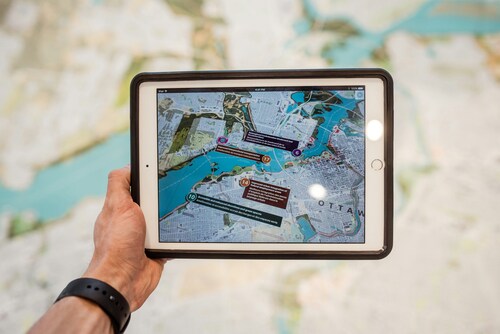In emergency response, every second counts. Firefighters and EMS professionals operate in environments where decisions must be made quickly, often with limited information and under significant pressure. Accurate incident reporting plays a critical role in ensuring safety, compliance, and operational efficiency. Yet, traditional reporting methods—often reliant on paper forms or delayed data entry at the station—have historically slowed down this process.
The rise of mobile Records Management System (RMS) tools has transformed the way fire and EMS agencies handle incident reporting in the field. By putting powerful, connected software directly into the hands of first responders, mobile RMS solutions streamline workflows, improve data accuracy, and enhance real-time decision-making.
This article explores how mobile RMS tools are improving incident reporting in the field, why agencies are moving toward them, and the broader benefits they deliver.
The Challenge of Traditional Reporting
For decades, fire and EMS personnel relied on paper documentation or desktop-based reporting software. After responding to an incident, responders would return to the station and manually input the details into the system. This created several issues:
- Delays in reporting: Critical information often wasn’t captured until hours after the incident.
- Human error: Details could be forgotten or misreported due to memory gaps.
- Operational inefficiency: Time spent completing paperwork at the station reduced time available for training, community outreach, or rest.
- Fragmented data: Separate systems for fire, EMS, and inspections made it difficult to create a unified view of operations.
These challenges led agencies to seek out more modern, mobile-first tools that allow reporting to happen instantly, on scene, and in a more streamlined fashion.
Mobile RMS: A Game-Changer in the Field
Mobile RMS tools allow responders to record incident details on smartphones, tablets, or rugged field devices while still on the scene. Information such as location, patient data, hydrant availability, and equipment usage can be logged immediately. These details are then instantly synced with the department’s central system.
Key features include:
- Real-time data entry: Responders can enter narrative reports, patient care details, or property information at the incident site.
- Offline capability: Mobile tools often allow data entry without internet access, syncing automatically once connectivity is restored.
- Integrated mapping: Tools like Esri integration allow responders to view hydrant locations, building layouts, and access points directly on their devices.
- Secure communication: Team members can exchange updates securely, ensuring collaboration during fast-moving events.
By moving reporting directly into the field, mobile RMS reduces delays and ensures information is captured while it is still fresh and accurate.
Improving Accuracy and Compliance
Accurate reporting is essential not only for effective emergency response but also for compliance with standards such as NFIRS (National Fire Incident Reporting System) and NEMSIS (National EMS Information System). Mobile RMS tools improve compliance by:
- Pre-populating fields: Automated data fields reduce the likelihood of missing or incorrect entries.
- Built-in validation: Systems flag incomplete or invalid information before reports are submitted.
- Centralized data updates: Changes made in the field are instantly reflected across the entire system, ensuring consistency.
This level of accuracy also supports agencies during audits, ISO reviews, or when applying for grants where documentation of past incidents is essential.
Enhancing Efficiency for Responders
One of the greatest benefits of mobile RMS is efficiency. Time saved on reporting means more time available for core responsibilities. For example:
- Faster reporting: Completing reports on scene minimizes the backlog of paperwork waiting at the station.
- Streamlined workflows: Data entered once in the field flows seamlessly into inspection, prevention, and suppression modules.
- Reduced duplication: Integrated platforms eliminate the need for re-entering the same information in multiple systems.
This efficiency translates into less administrative burden, improved morale among responders, and greater overall productivity for the department.
The Role of Unified RMS Platforms
The most effective mobile solutions are not stand-alone apps but part of a RMS platform for fire and EMS agencies. A unified RMS ensures that data from incidents, inspections, pre-plan surveys, hydrant mapping, and training records all feed into one central system.
When reporting from the field, responders don’t just capture data—they also connect it to the broader operational picture. For example:
- A fire inspection completed earlier in the week can provide tactical insights during a fire response at the same location.
- Hydrant data logged during routine checks is immediately available to crews dispatched to nearby calls.
- Patient records from EMS responses are integrated with hospital systems for better continuity of care.
By bridging prevention, suppression, and medical response, unified platforms turn mobile incident reporting into a tool for holistic situational awareness.
Real-Time Decision Support
The value of mobile RMS tools goes beyond reporting. With access to real-time information, responders make faster and better-informed decisions in the field. Examples include:
- Navigation support: Optimized routing ensures apparatus arrive quickly and safely.
- Building data access: Floor plans, Knox Box locations, and prior code violations provide critical context.
- Equipment tracking: Crews know exactly what apparatus and resources are available.
This level of decision support can significantly improve response outcomes, reducing risks for both responders and the public.
Strengthening Community and Administrative Outcomes
Incident reporting is not just about immediate response—it also shapes long-term community safety and administrative effectiveness. Mobile RMS tools help agencies:
- Identify trends: Data from field reports highlights recurring risks, such as frequent false alarms at certain locations.
- Support grant applications: Accurate data demonstrates need and performance when applying for state or federal funding.
- Engage the community: Transparent and reliable reporting builds public trust.
- Improve training: Incident data can be analyzed to refine tactics and prepare teams for future scenarios.
By strengthening both the operational and administrative sides of emergency services, mobile RMS becomes an essential tool for modern agencies.
Overcoming Barriers to Adoption
While the benefits are clear, some agencies face barriers when adopting mobile RMS tools, including:
- Budget constraints: Upfront costs may seem high, but they are often offset by long-term efficiency gains.
- Training requirements: Staff need proper onboarding to use the system effectively.
- Change resistance: Moving away from paper or legacy systems requires cultural adaptation.
To overcome these challenges, successful implementations typically focus on strong vendor support, phased rollouts, and clear communication about the long-term value of the system.
Looking Ahead: The Future of Incident Reporting
As technology continues to evolve, mobile RMS tools are expected to grow even more powerful. Features on the horizon include:
- AI-driven analytics: Predictive insights to identify risks before they become emergencies.
- Enhanced interoperability: Deeper integration with other public safety systems for seamless data sharing.
- Wearable technology integration: Linking incident reporting with body-worn devices for even greater situational awareness.
These innovations will further transform how agencies capture, share, and act on information in the field.
Conclusion
Mobile RMS tools have revolutionized incident reporting by enabling real-time, accurate, and efficient data capture directly at the scene. They improve compliance, reduce administrative burden, and provide responders with critical decision-making support. When integrated into a unified RMS platform, they connect every aspect of operations—from inspections and hydrant checks to suppression and EMS—into one cohesive system.
By embracing mobile RMS solutions, fire and EMS agencies position themselves to respond faster, operate more efficiently, and ultimately deliver safer outcomes for the communities they serve.




